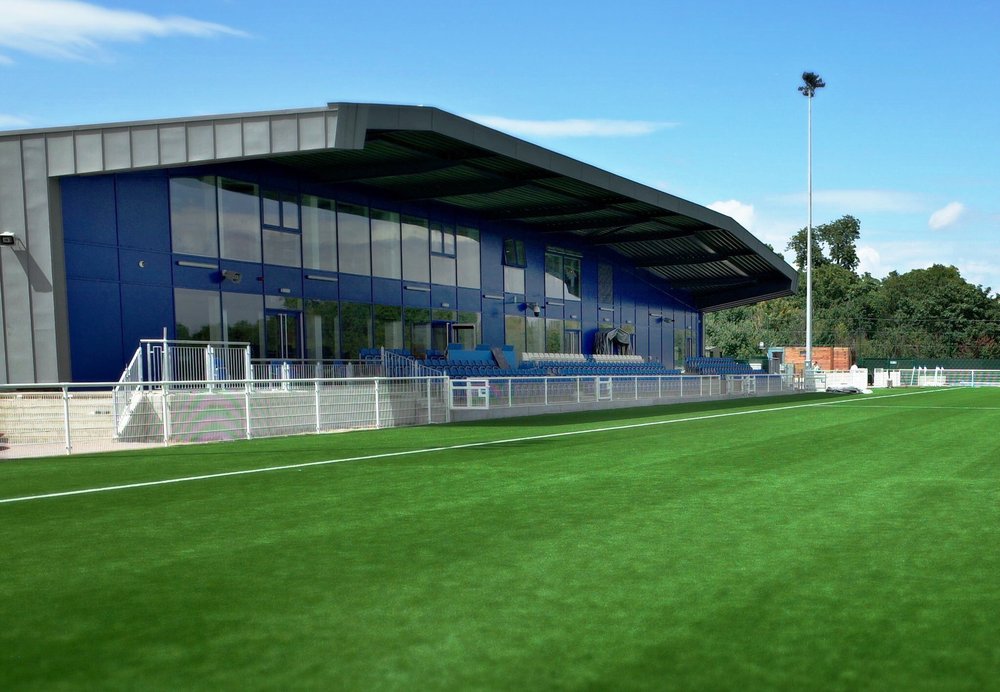
Aveley`s new Parkside Stadium
Almondsbury Town
Under their former guise of Almondsbury Greenway, they reached the FA Vase Final in 1978/79 having been semi-finalists in 1977/78 when they lost to Blue Star (later Newcastle Blue Star).
Almondsbury were beaten 4-1 at Wembley by Vase `specialists` Billericay Town.
After time in the Gloucestershire County League, they won promotion to the Hellenic League in 1982.
At the end of the 1992/93 season, following a period of financial difficulties, the club was placed in the hands of the liquidator.
It was, however, allowed to continue under yet another name, Almondsbury Town Football Club.
After a period of some eighteen months, the club`s Oaklands Park ground was purchased by Gloucestershire FA for their new headquarters and the club negotiated a lease arrangement for the clubhouse and ground.
After a period of 12 years moving between mid-table mediocrity and flirting with relegation, the first trophy for the senior side under the chairmanship of Bob Jenkins was secured in the form of the Floodlit Cup in 2005.
With new appointments made to the management team in 2005, the club progressed both on and off the field, and in the 2006/07 season the club managed its highest league position in over 20 years and reached the final of the Gloucestershire Challenge Trophy where they were beaten 2–00 by Slimbridge.
In 2007/08 the club had another successful season but lost out on promotion to the Southern League to North Leigh by a goal difference of two after both teams finished on 96 points.
Runners up spot was also achieved in the Hellenic League Cup final after a 2–1 defeat by Hungerford Town.
The 2008/09 campaign saw the Almonds finish in fourth position, 6 points behind the eventual league champions Hungerford Town.
This time though, the Almonds went one better than last season and secured the SBJ Insurance Brokers League Challenge Cup with a 1–0 victory over Carterton.
The 2009/10 season began with high hopes with Paul Weeks in charge of the team but he decided to try his luck at Cinderford Town after only 10 unbeaten games.
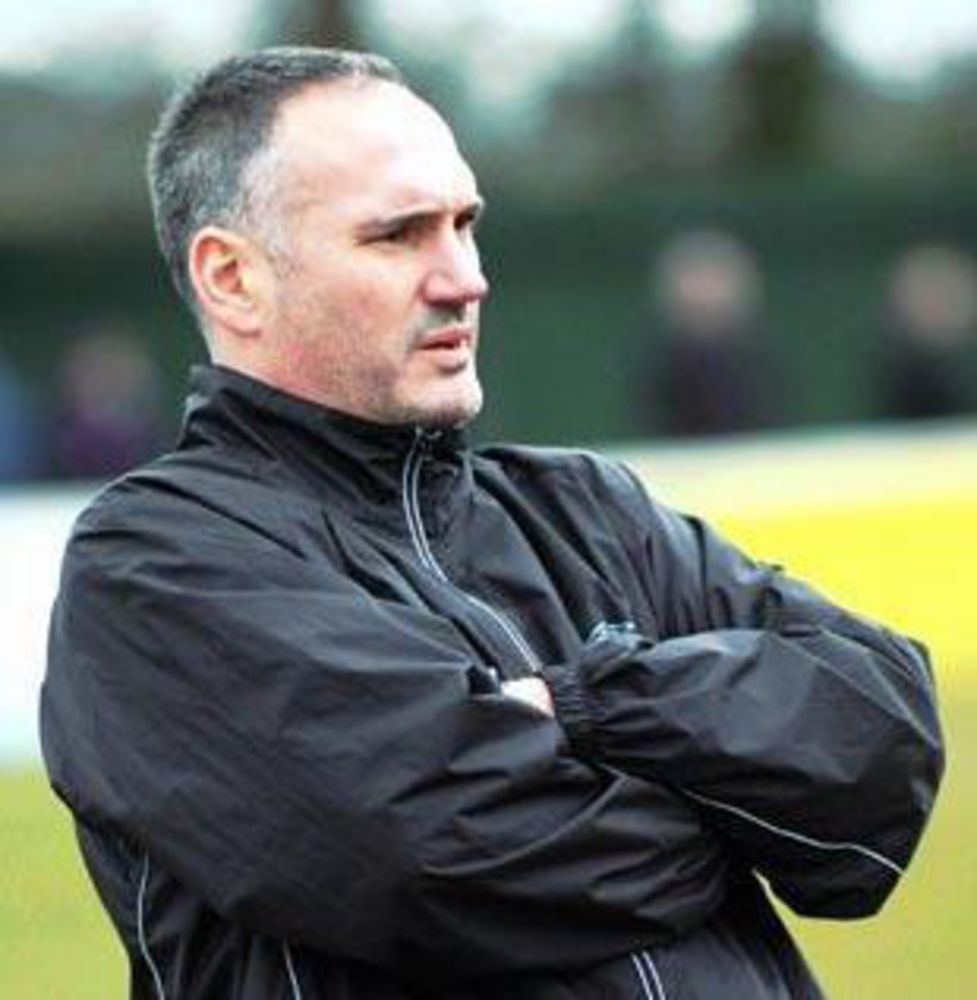
Richard Thompson
Former Yate Town boss Richard Thompson replaced him.
It didn’t take long for a massive change in personnel and the results justified this decision as the Almonds return to title-winning ways, securing the Hellenic League championship and the GFA Challenge Trophy `double`, and achieving promotion to the Southern League for 2010/11 season.
However, despite finishing a very creditable eighth and above the likes of Taunton Town, Yate, Gosport Borough and Paulton Rovers, a row over their tenure at Oaklands Park proved the final nail in the coffin and in April 2011 the club announced that they were withdrawing from the Southern League and disbanding the first team with a look to reviewing the club's status altogether over the summer.
Their failure to find a groundshare was given as the main cause for their demise, although the Gloucestershire FA argued that it was Almondsbury's decision to leave Oaklands Park originally in April 2010 that prompted them to find new tenants and that an agreement had been struck with Winterbourne United and Roman Glass St George in October of that same year.
Almondsbury replied that they could not move away from Oaklands Park for the 2010/11 season due to a conflict with league rules meaning their proposed move to Clevedon Town`s Hand Stadium fell through.
The club subsequently dropped into the Bristol & Suburban League Premier Division One, finishing bottom of the table in 2011/12 after which they folded.
Aveley are currently an Isthmian League Division One North club with a brand-new ground and ambitions to climb the non-League Pyramid, despite being in an area of Essex where there are a plethora of clubs.
However, since the opening of their new Parkside ground, attendances have increased to being over 300 on a regular basis.
Indeed, in 2018, Parkside hosted a number of games in the CONIFA World Cup – the international tournament for states, minorities, stateless peoples and regions unaffiliated with FIFA.
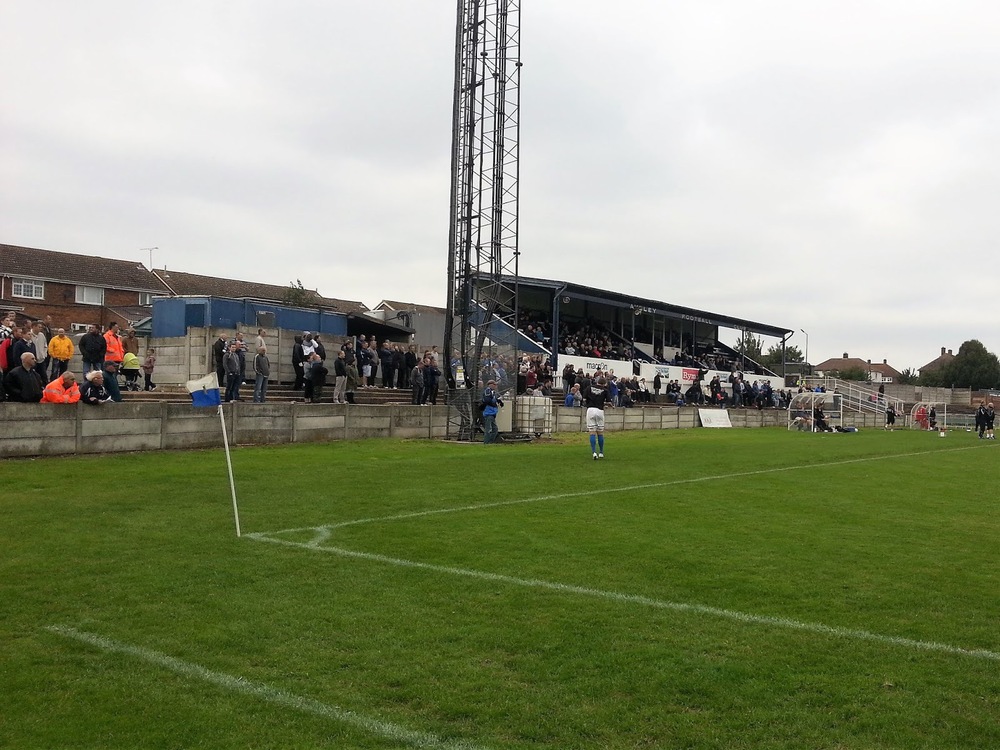
Aveley`s former Mill Field home
Formed in 1927, the Millers – nicknamed after their former Mill Field ground – played in the London, Delphian and Athenian Leagues before joining the Isthmian League upon its expansion in 1973.
They switched between Division One, Two and Three before, in 2004, the FA had a major re-organisation of the non-League Pyramid as the Conference North and Conference South were formed.
Therefore, Aveley were transferred to Division One East of the Southern League.
Despite playing against many of their former Isthmian League rivals who had also been switched, the Millers finished 17th out of the 22 teams.
Compensation, however, came in the form of the Essex Thames-Side Challenge Trophy, where they beat Romford 1-0 in the final at Mill Field, Simon Thomas scoring the only goal of the game.
Another difficult season followed on and off the pitch, and the Millers ended the season with their third manager, Steve Browne, steering them just clear of the relegation places.
However, at the end of that, their second season as a Southern League club, another re-shuffle by the `powers that be` saw Aveley switched back to the more familiar surrounds of Division One North of the Isthmian League in 2006.
Barking & East Ham United were switched to the Southern League Division One East from the Isthmian League at the same time as Essex neighbours Aveley.
In fact, the club were only three years old when they became members of the Southern League in 2004.
They were formed in 2001after the merger of Barking and East Ham United.
The club initially played in Division One of the Isthmian League, and then Division One North after league re-organisation in 2002.
Like Aveley, Barking did quite well in the new surroundings of the Southern League under Dennis Elliott and finished sixth in their first campaign.
And in 2005/06 they finished a place better in fifth and qualified for the play-offs but lost 3–2 to Stamford.
Like many of the Essex clubs who had been moved by the FA in 2004, Barking were transferred back to Division One North of the Isthmian League but resigned in June 2006 and folded.
Barking reformed for the 2006/07 season and currently play in the Isthmian North with Aveley again.
They progressed into the Woking & District League and then to the Surrey County League before winning promotion to the Combined Counties League in 2004.
They immediately won promotion to the Premier Division and, after successive 19th placed finishes, improved to ninth in 2007/08 and then won the title in 2008/09, finishing 17 points clear of second-placed North Greenford United.
That earned the club a rapid rise to Step 4 of the non-League Pyramid in under a decade.
They finished 17th in their first season in the Southern Division One South & West, with the likes of Taunton and Hungerford Town finishing below them.
Ahead of their second season as a Southern League club, Bedfont Green became Bedfont Town and played their home games at The Orchard, the former home ground of Bedfont, in a groundshare with Feltham.
They finished tenth in 2010/11 but the club hit financial problems when backer and former player Doug White resigned as chairman.
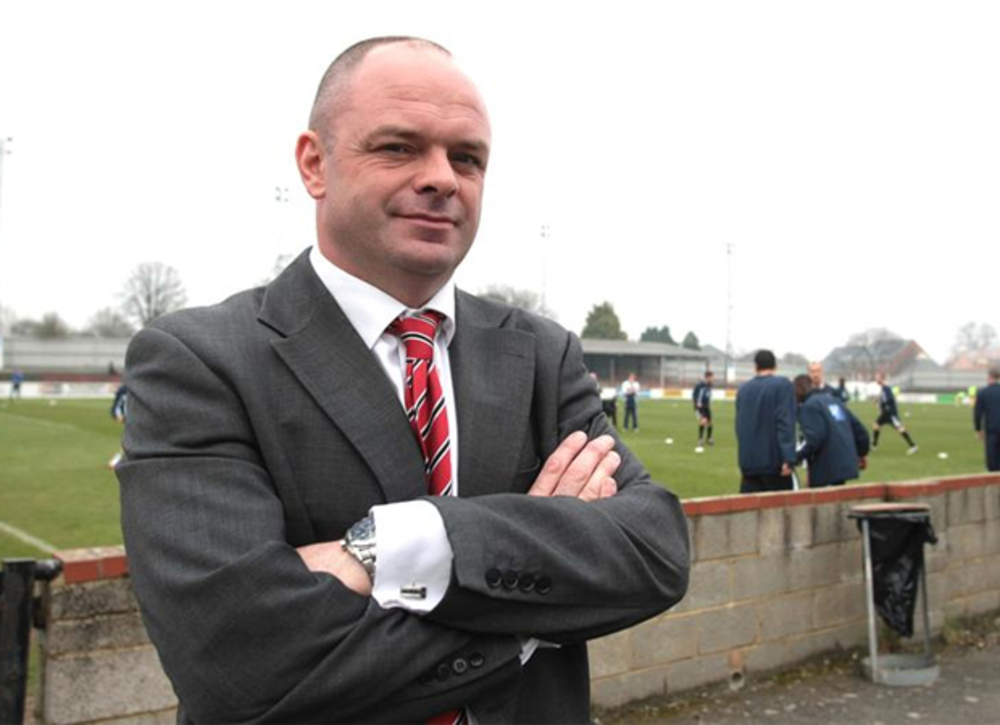
Garry Haylock
Former Hayes & Yeading United and Farnborough boss Garry Haylock was appointed manager in January 2012 but left the club five months later, standing down from his roles of manager and acting chairman and the club folded at the end of the 2011/12 campaign.
Doug White immediately re-formed a phoenix club and they went back to their roots and joined the Surrey Intermediate League.
However, they withdrew at the end of the 2013/14 season and folded, although the name, `Bedfont`, continues under the merged Bedfont & Feltham club currently playing in the Combined Counties League.
Bishop`s Stortford are a famous non-League club who have won the FA Amateur Cup in 1974, the FA Trophy in 1981 and enjoyed several good FA Cup runs, including a Third Round replay exit to Middlesbrough in 1982/83.
They also spent thirteen seasons in the Conference South and, bizarrely, the Conference North!
The 2016/17 season was a disaster for the club and probably the worst in the history, finishing second-from-bottom in the National League South.
Expected to return to the Isthmian League, instead they were placed in the to Southern League for the first time in its history, which began in 1874.
Former Tottenham Hotspur, Swindon Town, Rotherham United, Reading and Colchester United midfielder Kevin Watson was appointed manager late in relegation season.
And his young side finished 18th in the Southern Premier Division.
However, that was to be the Blues` only season in the competition as they were switched back to the Isthmian League for the start of the following campaign.
I will tag Blakenall and Bloxwich Town together, the reason for which will become clear.
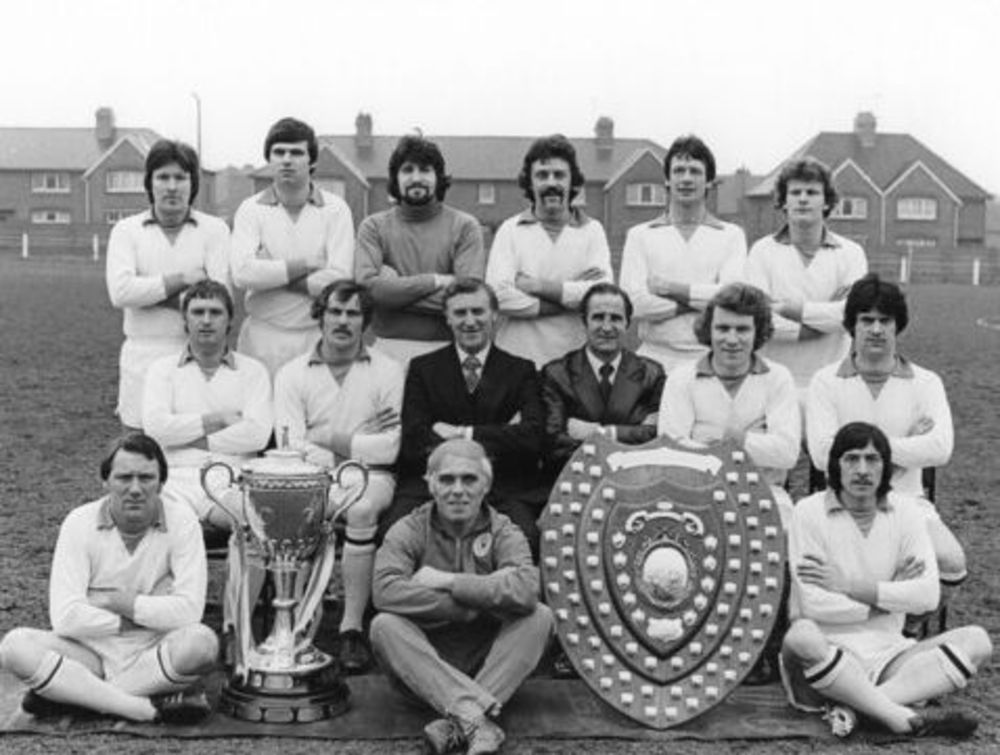
Blakenall FC
Blakenall were formed in 1960 and were originally members of the Worcestershire Combination before it became the Midland Combination in 1968.
In 1979, they moved into the West Midlands (Regional) League and eventually won the title in 1988/89 but were unable to step up due to their facilities at the time.
In 1994/95, Blakenall finished as runners-up and were promoted to the Midland Alliance.
In their two seasons at the higher level, the Nall finished second and then first under Bob Green and, with the Red Lion Ground now ready, won promotion to the Southern League Midland Division.
Then, under joint management of Paul Knox and Micky Folland, who had joined from Bloxwich Town, Blakenall finished sixth and then 14th.
At the end of the 2000/01 season the club merged with Midland Alliance club Bloxwich Town to form Bloxwich United, taking Blakenall's place in the Southern League.
However, after 19 games of the 2001/02 season, the Blakenall faction pulled out of the merger and resigned the club's place in the Southern League, leading to their record being expunged.
Bloxwich Town were reformed, but Blakenall were not.
Bloxwich were originally formed in 1976 and played in local leagues until joining the Staffordshire County League in 1981.
They stepped up into the West Midlands (Regional) League in 1984 and switched to the Midland Combination four years later.
In 1994/95 Bloxwich finished runners-up in the Premier Division and won the title the following season, earning promotion to the Midland Alliance.
Two seasons later the club were Midland Alliance champions and were promoted to the Southern League Midland Division.
However, the promotion coincided with the withdrawal of the club's financial backers, leading to almost all players and management leaving – ironically most of them to Blakenall!
As a result, Bloxwich finished bottom of the Midland Division in 1998/99, suffering an immediate relegation back to the Midland Alliance.
At the end of the 2000/01 season, the club merged with Blakenall to form Bloxwich United, with the new club playing at Blakenall's Red Lion Ground, although the eventual plan was to sell off the Red Lion ground and upgrade Abbey Park.
However, the new club folded midway through the 2001/02 season as mentioned earlier.
A new Bloxwich Town club was formed for the 2002/03 season, joining the Midland Combination.
After finishing seventh in 2003/04, they were promoted to the Premier Division.
However, the club folded again at the end of the 2004/05 season.
In 2016 another Bloxwich Town emerged when Midland League club Rostance Edwards were renamed.
Rostance Edwards had joined Division Two of the Midland Combination from the Wolverhampton Combination in 2013. When the Midland Combination merged with the Midland Alliance to form the Midland League in 2014, the club were placed in Division Three. They were Division Three runners-up in 2014–15, earning promotion to Division Two.
Boreham Wood`s story has been incredible, and they are now a well-established and superbly run National League club with a thriving academy.
Formed in 1948, the club began playing in the Mid-Herts League before joining the Parthenon League in 1951, finishing as runners-up in 1953/54 and 1954/55 before winning the title in 1955/56.
After finishing as runners-up again in 1956/57, they joined the Spartan League where they again ended up as bridesmaids in 1963/64 and again in 1965/66, after which they switched to Division Two of the Athenian League.
The 1968/69 season saw Wood win Division Two, earning promotion to Division One.
The following season they finished as runners-up in Division One and were promoted to the Premier Division.
After the division was disbanded in 1973, the club were placed in Division One for the 1973/74 season, in which they were league champions and reached the First Round of the FA Cup for the first time, eventually losing 3–0 at Southend United.
At the end of the season the club joined Division Two of the Isthmian League and won the division in 1976/77 and were promoted to the re-named Premier Division.
They were relegated in 1982 and spent the next thirteen years in Division One of the Isthmian League before winning the title in 1994/95.
The turn of the century saw Boreham Wood relegated again but bounced straight back as Division One champions in 2001.
However, they went straight back down again and then following the FA`s restructuring of non-League football in 2004, Boreham Wood were placed in the Southern League the first time, playing in Division One East for two seasons.
They finished seventh in their inaugural season and then won the championship in 2005/06 on goal difference from Corby Town.
Whilst a Southern League club, Wood went on an incredible run in the FA Trophy, reaching the semi-finals - the lowest-ranked team to have reached the last four of the competition at that point.
The club was promoted again and returned to the Isthmian Premier Division for the 2006/07 season.
The 2009/10 season was also a highly memorable one for the club, as it saw them finish fourth and take part in a play-off final for the very first time.
After defeating Aveley 1-0 away in the semi-final, Wood went on to beat Kingstonian 2-0 at home in the final and, under the shrewd management of former Arsenal winger Ian Allinson, took their place in the Conference South.
Five seasons later and the club were at the top of the non-League Pyramid after beating Whitehawk in the play-off final.
Much of Boreham Wood`s success over the years has been down to the leadership of Chairman Danny Hunter.
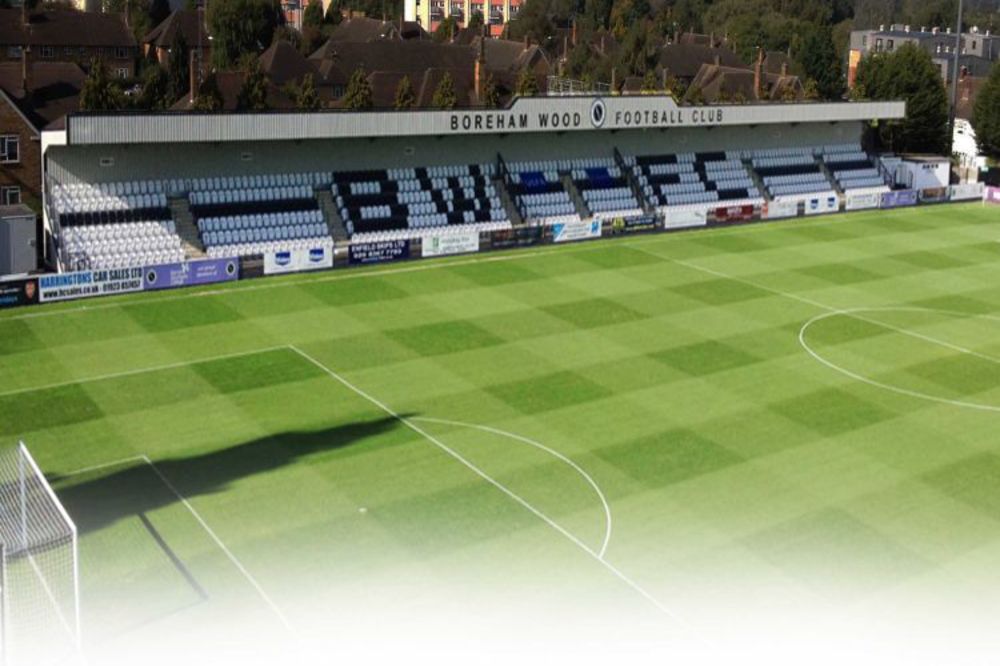
Boreham Wood`s superb Meadow Park
He has invested or raised over £14m in taking the club through the Isthmian League to the National League and greatly modernised the current infrastructure, player recruitment, ground and facilities, which has made Meadow Park almost unrecognisable from its early days.
In 2017, Hunter secured further investment of £1.8 million building a new training facility, laying a new DESSO pitch of Premier League quality, installing new floodlights and dug-outs.
Before the pandemic struck, Wood`s facilities were being utilised on a daily basis, 52 weeks of the year.
The clubhouses the largest sports education programme in the whole country, which has now been established for well over a decade - it is a programme that boasts over 600 scholar/students for the next academic year and 2018/19 season.
There`s no doubt that Boreham Wood can be held up as a great example of what can be achieved as a non-League club.
Another club to grace the top of the non-League Pyramid – and further - Boston United, also had two separate short spells in the Southern League.
Although football was played in the Lincolnshire market town since Victorian times, Boston United emerged in 1933.
They were members of the Midland League, taking the place of the former Boston Town club.
However, it wasn`t until 1955/56 that the club enjoyed and league success, finishing as runners-up to Peterborough United, although they did make some good forays into the FA Cup, reaching the Second Round in 1934/35 and the First Round in 35/36, 36/37, 52/53, 53/54 and 54/55.
In 1955/56, managed by former Derby County goalkeeper Ray Middleton, Boston put together a squad that would challenge for honours over the next few seasons.
Many of his signings were from his former club and when Boston reached the Second Round of the FA Cup in 1955/56, Middleton was delighted to be drawn against Derby at their Baseball Ground.
With six former Derby players in the United team, they amazingly won 6-1 - still a record score by a non-League club against a League club on their own ground.
A brave fight against Tottenham Hotspur in the Third Round wasn't enough to stop them going out 4-0.
Attendances at Boston at that time were averaging 5,000 to 6,000 for league games, and when floodlights were first used for the visit of Corby Town in 1955 over 9,000 people were in the ground!
In search for more honours, and a Football League place, United joined the Southern League for the 1958/59 season, finishing third in the North Western Zone.
A mid-table position was all that was gained the next year, while the following season saw them rock-bottom and they resigned and spent 1961/62 in the Central Alliance, completing a league and cup `double`.
The next season they re-joined the `new` Midland League but by 1964 financial problems were at such a point they were forced to resign and to keep the club name alive while they sorted themselves out for a year or so, running an amateur side in the local Boston & District league during 1964/65.
They came back in style, though, winning the United Counties Counties League in 65/66 – their one and only season in that competition – and won successive West Midlands (Regional) League titles, earning a place in the Northern Premier League in 1968.
They enjoyed a successful time in the NPL and became founder members of the new Alliance Premier League in 1979.
Relegated in 1993, they returned to the Northern Premier League before being switched to the Southern League for the first time in 37 years.
After a poor start which saw them drop into a relegation spot, manager Greg Fee resigned and was replaced by the manager of Stamford AFC, Steve Evans – currently managing League One side Gillingham.
The turnaround in the Pilgrim's fortunes was quite dramatic. Although it was always unlikely that Boston would catch up with runaway leaders Nuneaton Borough, they eventually claimed the runners-up spot.
The club also had their best run in the FA Trophy since 1993, reaching the quarter-finals before being knocked out by St Albans City.
The Pilgrims finally won promotion back to the Conference after a seven-season absence in 1999/00, having led the Southern Premier for much of the season and clinched the title with a victory at York Street over Lincolnshire rivals Grantham Town in front of a crowd of over 4,000, with three games to spare.
Two more seasons in the Conference saw Boston gain a place in the Football League as champions in 2002.
Boston were relegated at the end of the season. However, in June 2007 demotion to the Conference North was confirmed after the Pilgrims entered a Company Voluntary Arrangement (CVA). It meant that United would begin the 2007/08 season in the second tier of non-League football for the first time since 2000.
Chestnut Homes duo David Newton and Neil Kempster assumed control of the club in July 2007 and instantly set about trying to restore the club’s fine reputation of years gone by. They achieved notable success in May 2008 when they brought the club out of CVA — a feat achieved two years ahead of schedule.
The 2007/08 season saw the Pilgrims finish 10th in the Conference North, under the guidance of new manager Tommy Taylor. However, the Pilgrims were hit with another demotion in June 2008, when the club were removed from the Conference and placed in the Northern Premier League.
United struggled to adapt and escaped relegation on the final day of the season by virtue of a 1-0 victory over Cammell Laird.
The next season though saw Boston back in the Conference after a play-off final win against Bradford Park Avenue and they have remained there ever since, losing out in two play-off campaigns for a place in the National League.
Another current club playing at Step 2 level, Braintree Town, have also been brief members of the Southern League in the past.
The club were originally called Crittall Athletic, playing in the Eastern Counties League, and then, from 1968, Braintree & Crittall Athletic.
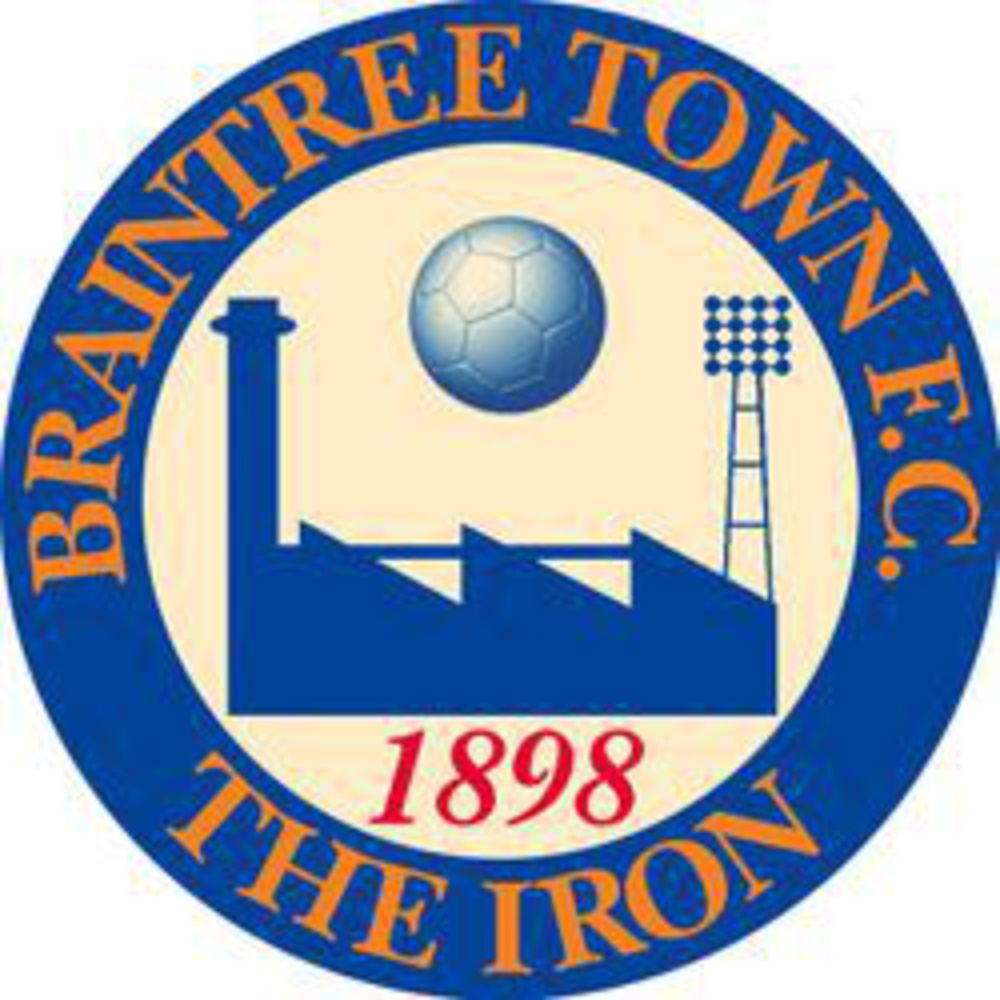
They were Eastern Counties League champions in 1936/37, 1983/84, under another change of name to Braintree and 1984/85, now with `Town` added to its title.
They were runners-up four times before gaining promotion in 1991. However, they were placed in the Southern League South Division not, as they expected, into the Isthmian League.
Under the respective managership of Frank Bishop, Peter Collins and then Tony Hall, Braintree finished fourth in its first season at Step 4 and then ninth in 1992/93.
Mid-table finishes followed for the next two campaigns before they ended up in fifth in 1995/96 but it would have been third but for a points deduction for administrative misdemeanors.
In the summer of 1996, the club asked the FA if they could switch leagues to reduce their travelling.
The South Division at the time stretched from Essex to Somerset and down to Kent and Hampshire and even an `overseas` trip to the Isle of Wight!
After initially being refused, they were allowed to move to Division Three of the Isthmian League, although it was an effective drop of two divisions.
Braintree fought back quickly and by the turn of the century were in the Isthmian Premier Division.
Premier Division champions in 2005/06 saw the Iron win a place in the Conference South and then enjoyed a terrific time under the Cowley brothers, Danny and Nick, by winning a place at the top of the non-League Pyramid.
The pair`s departure to Lincoln City cost Braintree and they were back in the National League South.
But season 2017/18 season saw Braintree finish sixth and in the play-offs they defeated Hemel Hempstead Town and Dartford to reach the final, in which they beat Hampton & Richmond Borough 4–3 on penalties to earn promotion back to the National League. However, they were relegated to the National League South the following season after finishing second-from-bottom of the National League.
Brentwood Town are a relatively new club.
In the 1950s and 1960s the town had a successful amateur club, Brentwood & Warley, who were three times winners of the Delphian League and then joined the Metropolitan League.
In 1965 they turned ‘professional’, becoming Brentwood Town and, after finishing third at the end of the 1966/67 season, Brentwood were promoted to the Southern League Division One.
In 1968/69 they won Division One and were promoted to the Premier Division.
In the same season the club also reached the Second Round of the FA Cup, where they lost 10–1 at Southend United.
Brentwood became a force in the Southern Premier Division and reached the FA Cup Third Round in 1969/70, losing 1-0 at home to Northampton Town.
However, at the end of that season the club effectively folded and amalgamated with another Southern League club, Chelmsford City.
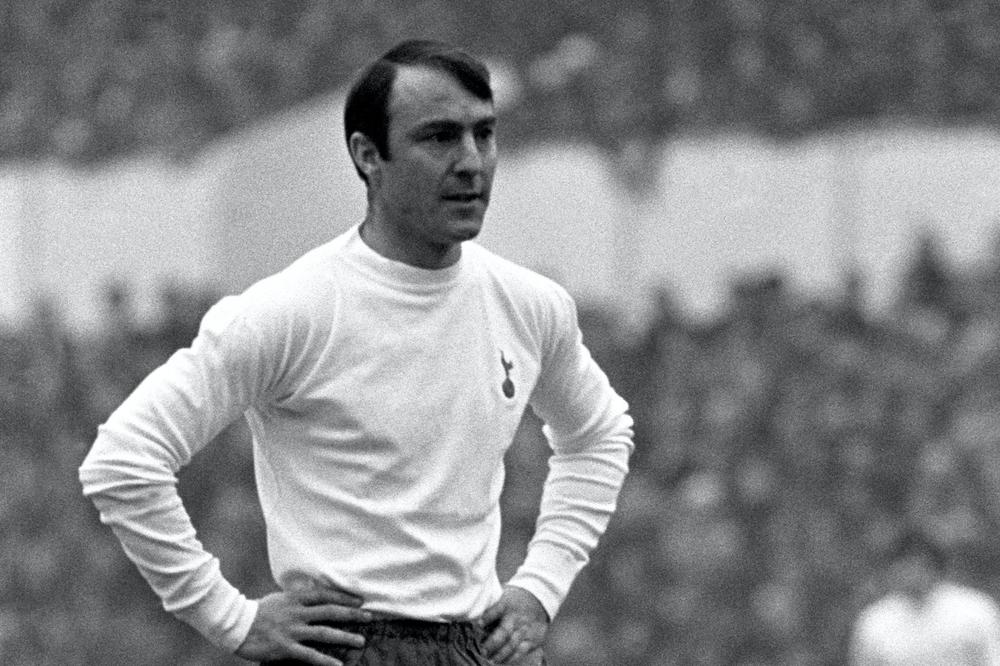
Jimmy Greaves
Following the demise of Brentwood Town in 1970, Manor Athletic found itself the most senior club in the district and adopted the town name, changing from Manor Athletic to Brentwood Athletic, and then becoming Brentwood FC in 1972.
In 1974 they joined the Essex Senior League and a year later signed their most famous player, Jimmy Greaves!
They remained in the Essex Senior League before winning the title in 2006/07 when they were promoted to the Isthmian League, being in Division One North, apart from 2015/16 when they enjoyed one campaign in the Premier Division, suffering relegation straight back down to the Isthmian North where they have remained ever since.
Burgess Hill Town, current members of the Isthmian League South East Division, had just one season as a Southern League club.
Formed in 1882, the Hillians were members of the Sussex County League (now Southern Combination League) for most of the time in existence, winning the title in 1975/76, 1996/97, 1997/98 and 1998/99.
The new millennium season saw the Hillians take the championship with the team remaining unbeaten in the league until April and the club also had its best-ever run in the FA Vase, only being beaten after extra-time by eventual finalists Tiptree United in the last eight, before a club record attendance of 1,598.
With plans being laid for Southern League football, club directors, Gary Croydon and Eddie Benson appointed Danny Bloor as manager for season 2002/03 and the club was rewarded with yet another championship crown their fifth in seven seasons.
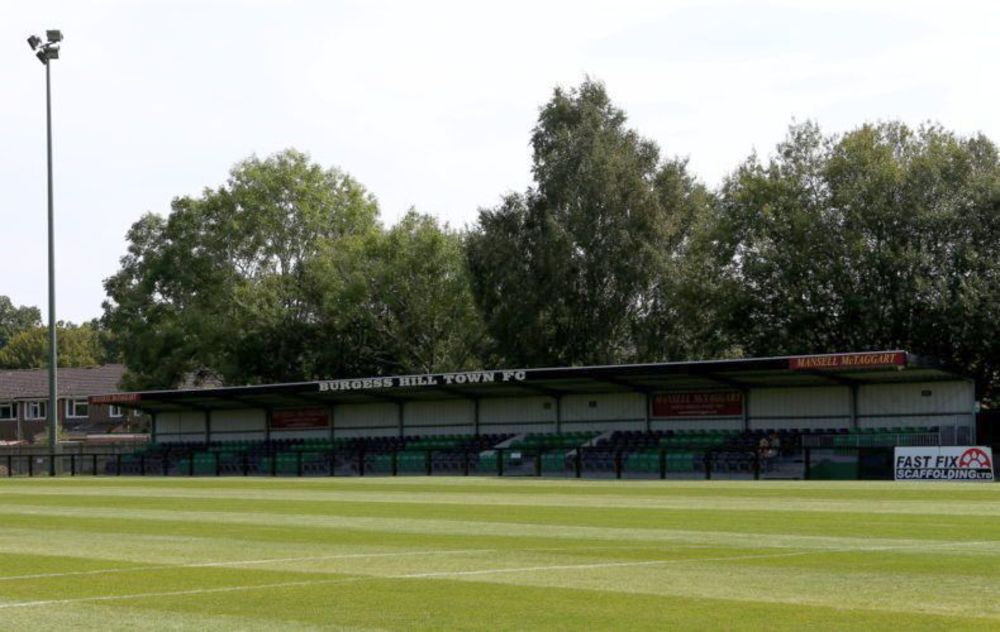
Burgess Hill Town ground
Gary Croydon took over as manager for a second time as the club entered the Southern League for the first-ever time.
Placed in Division One East and facing trips as far afield as King`s Lynn, Corby Town and Stamford, they performed creditably, finishing ninth, with clubs such as Dartford, Fisher Athletic, Hastings United and Corby finishing below them.
However, Burgess Hill were moved over to the Isthmian League in 2004 due to the restructuring of the non-League Pyramid with the introduction of the Conference North and South divisions.
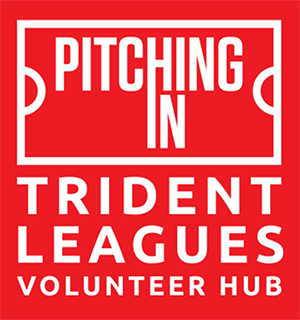
Most clubs are looking for volunteers. Find out more on the button below:
www.PitchingInVolunteers.co.ukAll the news and results in one place.
REGISTER